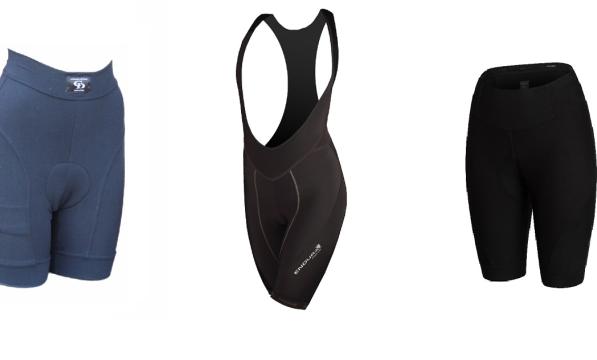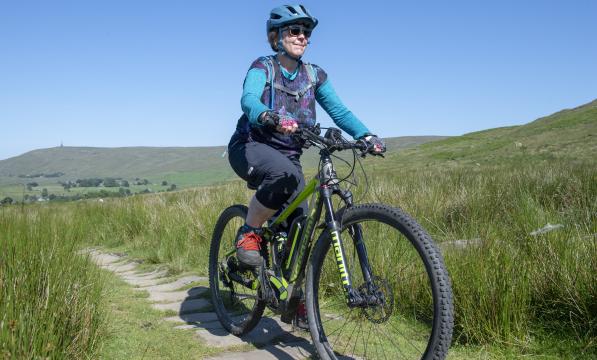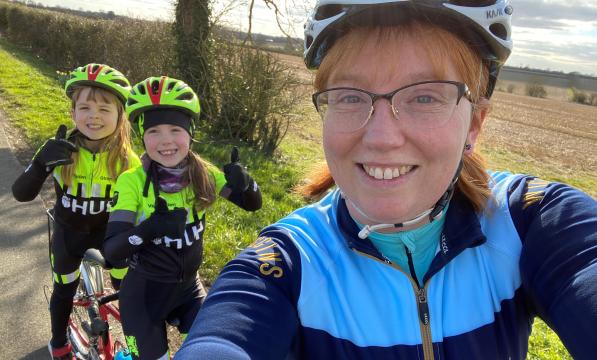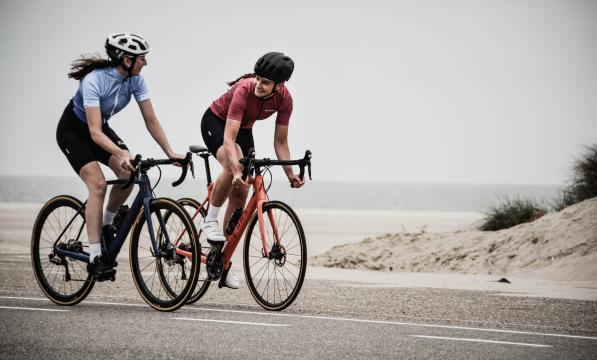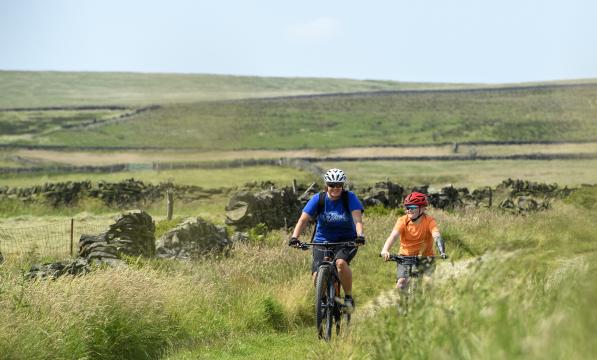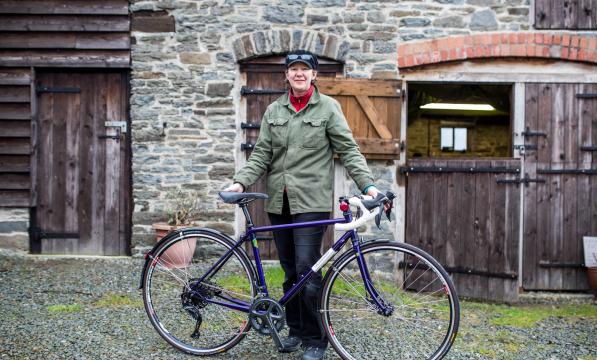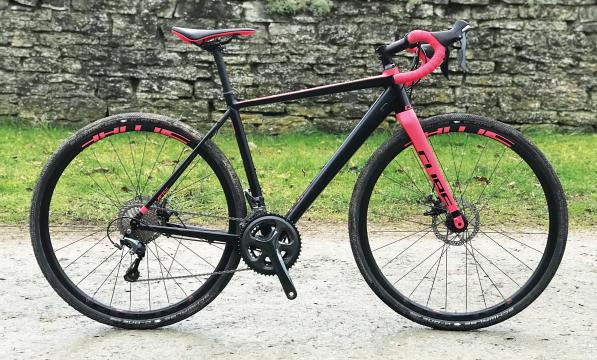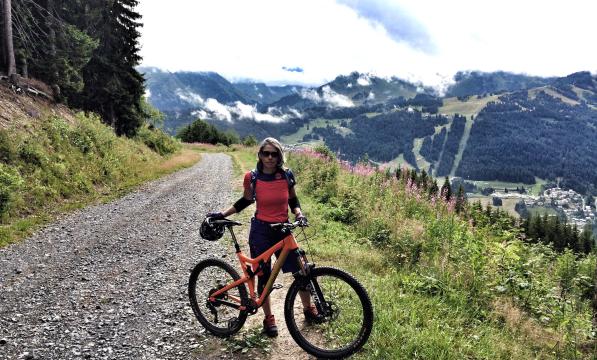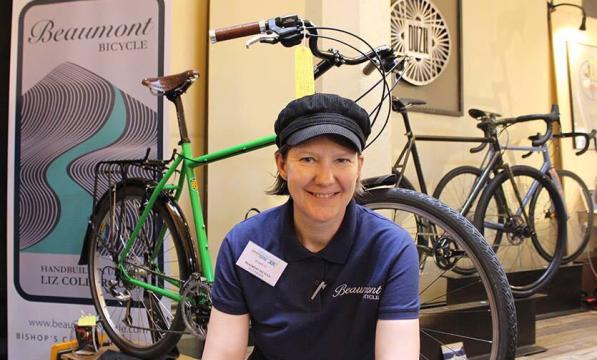Do women need women's-specific bikes?

As a woman who started out in the cycle trade in the mid-80s, I’m still here 30 years on and delighted to have been asked to share my opinions on this matter with you.
When I was 35, I decided to retrain as an occupational therapist. I progressed quickly to Senior 1, but I always felt quite nostalgic about my years in the cycle trade.
When faced with completing an 81-page Social Services assessment with a client, I decided enough was enough, handed in my notice and re-entered the cycle trade. So, this article is written by probably the only woman framebuilder with an OT qualification in the world.
Je ne regrette rien, as time in the NHS and social care gave me a really good understanding of the human anatomy, as well as the reasons why we struggle to mount and dismount, why it takes some children longer to learn to ride than others and all the little things that translate into confidence when riding.
Essentially, 'women's-specific bicycles' are designed around the proportions of an average woman. The term 'women's specific' is used when describing a road bike or hybrid that could potentially be mistaken for a man's bike – dreadful expression I know, but you know what I mean: a frame that features a cross bar or top tube.
Historically, a bicycle was sized according to the length of the seat tube. However, this became more 'fluid' when the sloping top tube and compact frame design became fashionable.
We now often talk about 'virtual top tube length', which must be very confusing if you didn't grow up with an understanding of horizontal top tube lengths as seen on classic frames from 1900-80. But during the 90s, we switched to T-shirt-style sizing for frames, which was perhaps more helpful to the layperson.
Women's-specific sizing ranges from XS, S, M to L, but the fact is that we still vary enormously in leg length, shoulder width, back length and hip width, let alone overall height, age, confidence and flexibility.
What is women's-specific design and why does it matter?
Well, it all starts with the average woman. 'Ha!', I hear you cry, 'what’s average?' Exactly. For the purposes of getting a few differences flagged up and examined in more depth, let's first look at some general physiological differences, but keep in mind that in reality we are all on a continuum.
Back length
As a general rule, women tend to have proportionately longer legs and shorter backs and men shorter legs and longer backs. Already this is limiting as I can think of several women I know with a longer back and shorter leg. But, let's put that aside for now.
An off-the-peg women's road bicycle designed for day rides or sportives will have a shorter top tube and handlebar stem than a comparatively sized men's version. This means that the rider should feel comfortable in terms of 'reach' which is the term used to describe the horizontal distance from saddle to handlebar.
If the reach is too long, anyone (regardless of gender) will feel 'stretched'. This will be felt within 30 minutes of riding as a strain or pain in the neck and upper back, shoulders and upper arms.
The body will try to find the least stressful position, resulting in the rider holding the handlebar on the 'tops' rather then resting the web of the hands snuggly on the rubber brake hoods. The rider may even try and hold the bars with just the ends of the fingers with a claw-like grip.
If the reach is too short, the rider will feel cramped and the tell-tale signs will either be a sense that your bottom is slipping off the back of the saddle or the web of your hands creep up the brake hoods a bit like a praying mantis.
Saddle and handlebar height
Turning our attention to leg length, I've mentioned that women tend to have longer legs and shorter backs. So the saddle may need to be set higher than the handlebar height.
The distance from the top of the saddle to the ground compared with the top of the handlebar to the ground should usually be a 'drop' of at least 25mm, so that the handlebars are set a little lower than the saddle. But this distance will vary depending on the length and flexibility of your back.
The longer and more flexible your back, the deeper the drop can be, so men tend to require a deeper drop than women. If the drop is too deep, though, you will feel it in your neck as you strain to look ahead.
Can the handlebars be raised? That depends on the configuration of the stem and corresponding spacers, as well as the frame's head tube length. My experience of designing frames that accommodate a relatively minimal drop for a woman with a shorter back and a long leg is to opt for a sloping top tube to give stand-over clearance, making sure the head tube is long enough not to look disproportional.
There is nothing uglier, in my opinion, than a short head tube with handlebar height extender and a load of spacers. But if it's what you need to be comfortable, that's far more important than looks.
Shoulder width
By and large, women have narrower shoulders than men. A women's-specific bicycle should therefore feature a proportionally narrower handlebar.
A wide handlebar will spread a rider's arms and serve to trap more air as you ride – like a sail – causing you to punch a bigger hole in the wind. Luckily, we have elbows, so even the widest shouldered among us can keep the size of the hole we punch to a minimum. The smaller the hole, the less the wind resistance. Very important when you're time-trialling or track cycling.
The handlebars I particularly like have a slight flare to the dropped section, making a descent feel more stable as the rider's hands are a little wider.
Women's arms are usually proportionately shorter then men's, so the ideal handlebar style features a shorter reach in terms of the distance from the top of the handlebar to the point where the brake levers attach and ideally a shallower drop, which is the distance from the top of the handlebar to the dropped position. This style of handlebar is commonly called 'short and shallow'.
Hand size
Women tend to have smaller hands than men. Not many of us know that there are small interchangeable rubber blocks that effectively reduce the distance from handlebar to brake lever, making easier to grasp.
Keep in mind that these dual-function brake levers are designed around the average male hand. If you have quite small hands, try asking the salesperson to fit the larger brake adjustment blocks to reduce the reach.
Saddle shape
The saddle is probably the single most important component fitted to a women's-specific model. Getting one that fits and is appropriately designed for the intended purpose is like choosing the right shoes.
Generalising again, women's sit bones are usually wider than men's. The technical name for the sit bones is the 'ischial tuberosities' – two curved bones arranged like two sides of a triangle. These are the bony structures of the pelvis that 'contact' the saddle.
The more you sit up, the wider the distance between these bony contact points. The more you lean forward, the narrower the contact points become. This is why a Dutch-style bike has a wide saddle and a road bike has a narrower one.
A well-designed central groove or cut-out section – celebrate – serves to relieve pressure on soft tissue and nerves within our nether regions. Cycle shorts with padded inserts also serve to increase comfort. These are designed to be worn next to the skin, so no pants please! I regularly hear of people wearing pants under their lycra shorts. Someone I know developed an abscess doing an endurance ride as the seam of his underpants ran right under his sit bones.
If you don't wear padded shorts or lycra, look at cycle-specific trousers with gussets or double-thickness seats.
Other componentry
One final factor to mention is crank arm length and bottom bracket height. The shorter you are, the more this matters. Anyone under 5' 5" would be much more comfortable riding a 165mm crank arm or less.
A shorter crank arm allows the bottom bracket to be lower, but beware of a wide Q factor as this will force the bottom bracket back up again. Suffice to say you may only see attention paid to this on a custom frame build.
Age, strength, flexibility and terrain play a very underrated part in the choice of gearing. As a coverall, many manufacturers will fit a triple chainset (urgh) or you may see the same gearing as the men's version. I feel this carries a subtext, that women probably won't notice and if they do, they can pay for it to be altered or just get fitter. I'm not sure I like this attitude. I'm very pleased that 1x or 'one by' is becoming more popular. This makes so much sense.
Summary
To return to the question, do women need women's-specific bicycles? The answer is that everyone needs a bike that fits well. For several different 'sizes' of woman, the women's-specific models big companies like Trek, Specialized and Giant have produced will make a positive difference.
But it's important to remember we are all different and our bodies change over time and the majority of bicycle shops are not fully versed in dealing with those women (and men) who don't neatly fit off-the-peg sizing. My colleagues in the trade who ask, listen and adapt a bicycle to suit the outliers among us will reap the rewards in more ways than one.
When a bicycle has been adjusted to fit the rider, the rider gets the best from it, enjoys cycling more and wants to ride more. An ascending spiral of success with all the planets aligned. That's how it should be.
Liz Colebrook is a member of Cycling UK and owns Beaumont Bicycle.

